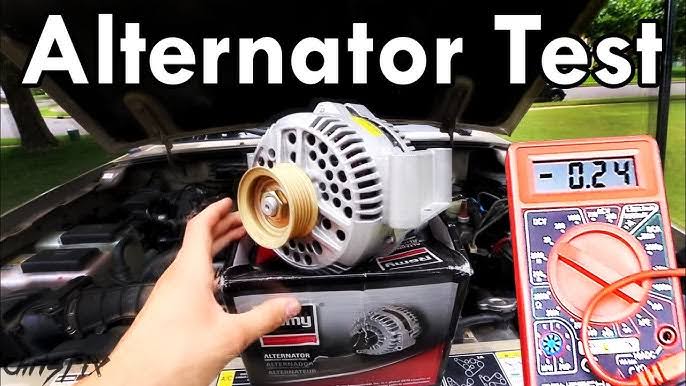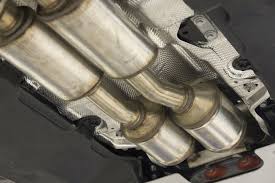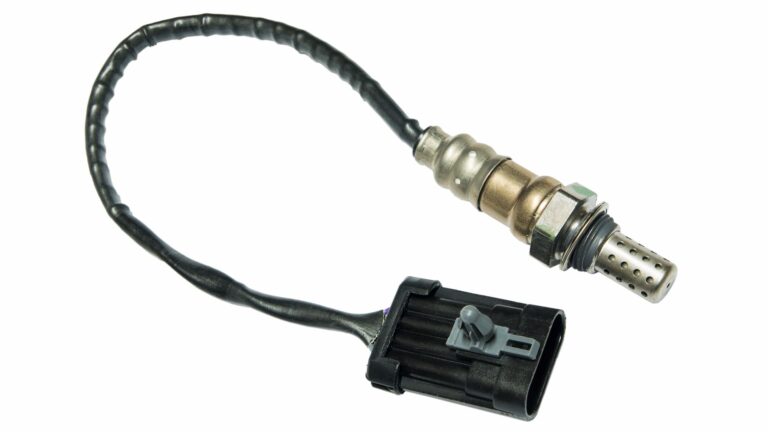How Do I Know If My Alternator Is Bad?

The alternator is responsible for keeping your car’s battery charged and powering electrical components while the engine is running. If your alternator fails, your car may experience dim lights, battery drain, electrical malfunctions, or even engine stalling.
In this guide, we’ll cover the most common signs of a bad alternator, how to test it, and when to replace it.
Signs of a Bad Alternator
1. Battery Warning Light on the Dashboard
- The battery, ALT, or GEN warning light may turn on if your alternator isn’t working properly.
- It may flicker at first and then stay on permanently as the alternator deteriorates.
2. Dim or Flickering Headlights
- If your headlights dim when idling but brighten when you rev the engine, your alternator may be struggling.
- Interior lights, dashboard lights, and infotainment screens may also flicker.
3. Weak or Dead Battery (Even After a Jump-Start)
- A failing alternator won’t charge the battery properly, leading to repeated battery drain.
- If your battery keeps dying, even after being replaced or jump-started, the alternator may be bad.
- Test: Jump-start your car, remove the jumper cables, and see if the engine stays running. If the car dies shortly after, the alternator isn’t charging the battery.
4. Electrical Issues (Power Windows, Radio, or Dashboard Malfunctions)
- The alternator powers all electrical components, so you may notice:
- Slow or unresponsive power windows, seats, or sunroof.
- Dashboard lights flickering or gauges acting erratically.
- Radio, infotainment, or climate control turning off unexpectedly.
5. Strange Noises (Grinding or Whining Sounds)
- A failing alternator can produce:
- Grinding noises from worn-out bearings.
- Whining or buzzing sounds from a bad voltage regulator or slipping belt.
6. Burning Smell (Overheating Alternator or Belt Issues)
- A burning rubber smell could indicate a slipping or overheating alternator belt.
- A burning electrical smell might suggest an internal alternator failure.
7. Difficulty Starting or Frequent Stalling
- If the alternator isn’t supplying enough power, the ignition system may struggle, causing:
- Slow or rough engine starts.
- Frequent stalling, especially when idling.
How to Test Your Alternator
Step 1: Check the Battery First
- Use a multimeter to check the battery voltage:
- 12.6V or higher – Battery is good.
- Below 12V – Charge or replace the battery before testing the alternator.
Step 2: Test the Alternator Output
- Start the engine and let it idle.
- Set a multimeter to DC voltage and place the probes on the battery terminals.
- A healthy alternator should produce between 13.8V and 14.8V while running.
- If the voltage is below 13V, the alternator is not charging properly.
- If the voltage is above 15V, the voltage regulator may be faulty.
Step 3: Perform the Headlight Test
- Start the engine and turn on the headlights.
- Rev the engine to 2,000-3,000 RPM.
- If the lights get brighter, the alternator may be weak or failing.
- If the lights dim or flicker, the alternator is struggling to provide consistent power.
Step 4: Inspect the Alternator Belt and Wiring
- Check the alternator belt for looseness, cracks, or wear.
- Look for corroded or loose wiring connections at the alternator and battery.
When to Replace the Alternator
Replace your alternator if:
- The voltage test shows less than 13V while the engine is running.
- The alternator makes grinding or whining noises.
- The battery repeatedly dies despite being in good condition.
- You experience electrical failures or engine stalling.
Conclusion
A failing alternator can cause dim lights, dead batteries, electrical malfunctions, and engine stalling. If you notice these symptoms, test the alternator with a multimeter and inspect the belt and wiring. Replacing a faulty alternator early can prevent breakdowns and expensive repairs.
Also Check:
• Does a Bad Alternator Drain the Battery?






One Comment